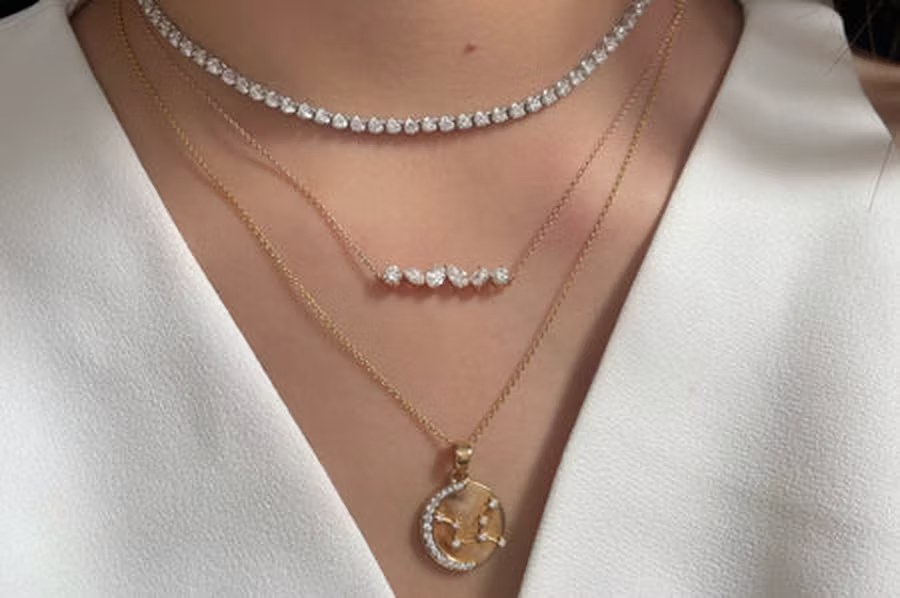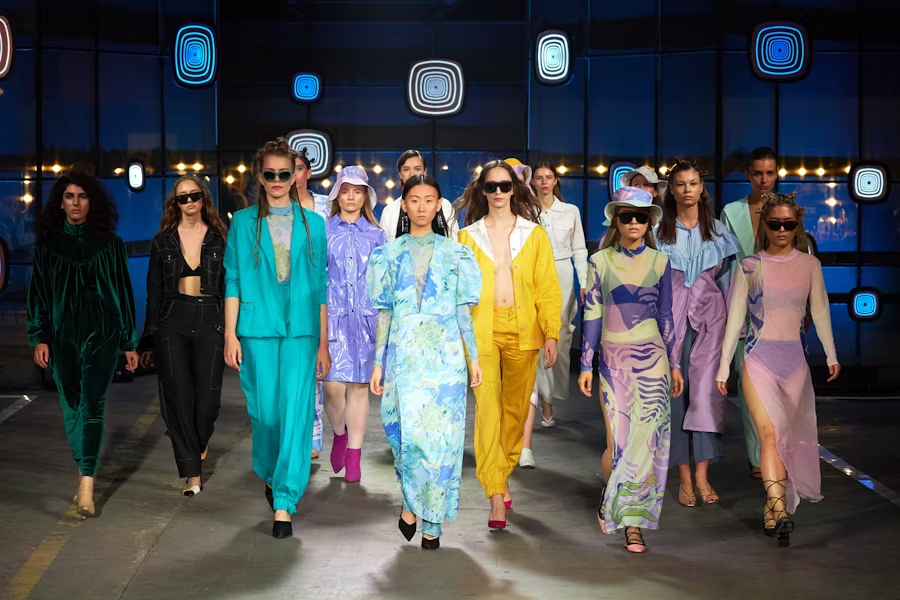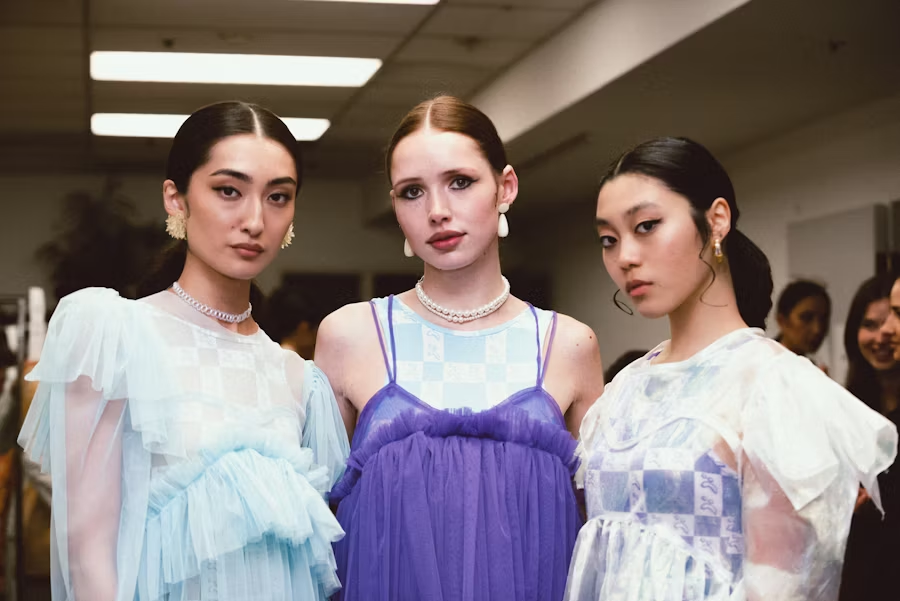Curious about how fashion trends connect with culture and lifestyle? Fashion trends are a mirror of our cultural heritage and personal values, influencing and reflecting our way of life. This article explores these connections, highlighting how cultural elements shape fashion and how fashion impacts our daily choices and identities.
The Role of Cultural Heritage in Fashion Trends
Fashion trends are often seen as fleeting, but they are deeply rooted in cultural heritage and historical significance. Globalization has played a crucial role in facilitating the exchange of cultural influences that redefine traditional styles. This blending of diverse elements has given rise to modern fashion trends that not only captivate the eye but also tell stories of different cultures and their values.
Understanding the connections between fashion and culture is paramount. It allows us to appreciate the evolving nature of fashion, which is more than just clothing—it is a blend of culture, history, and lifestyle. Appreciating fashion beyond surface trends allows us to understand the stories and cultures behind what we wear.
Exploring the role of cultural heritage in fashion trends reveals how traditional garments and accessories are adapted in contemporary fashion. This underscores the importance of ethnic and cultural expressions in the fashion industry, celebrating diversity and heritage.
Traditional Garments and Modern Adaptations
Traditional garments hold profound significance within their respective cultures, embodying values, customs, and identity. For instance, the Japanese kimono symbolizes good fortune and longevity, reflecting the beauty and respect for Japanese culture. Similarly, saris in India showcase the country’s cultural heritage through various draping styles and prints, each telling a story of regional traditions.
Another example is the Agbada, a flowing, wide-sleeved robe worn by men in Yoruba culture, which symbolizes masculinity and wealth. These garments are not just clothing; they are a reflection of cultural identity and heritage, transcending gender. Today, many famous fashion brands reinterpret traditional dress patterns, such as Scottish tartan, integrating historical significance with modern aesthetics.
The evolution of fashion transforms these traditional garments into contemporary pieces, merging cultural heritage with current trends. Materials like silk, historically significant in Chinese fashion, continue to be used in modern interpretations of garments, blending the old with the new.
Jewelry and Accessories Inspired by History
Jewelry and accessories are another avenue through which historical cultures continue to influence modern fashion. Designs inspired by historical motifs illustrate the profound impact of traditional symbols on contemporary accessories. These pieces serve as a bridge between past and present, keeping cultural narratives alive in today’s fashion world.
For instance, the resurgence of ethnic accessories as fashion statements celebrates cultural diversity and heritage. Items like handcrafted Viking jewelry have seen a revival among fashion-forward individuals who admire the craftsmanship and historical storytelling behind each piece.
Sunglasses, too, have evolved from functional eye protection to fashionable statements. Brands known for heritage-inspired eyewear, such as Carrera sunglasses Australia, blend retro aesthetics with modern innovation, showing how accessories can pay homage to timeless design while appealing to today’s style sensibilities.
Incorporating historical elements into modern jewelry designs not only adds aesthetic value but also connects wearers to their cultural roots. It is a reminder of the timelessness of cultural heritage and its relevance in today’s fashion landscape.
Ethnic and Cultural Statements in Fashion
Ethnic accessories have become powerful statements in the fashion industry, celebrating cultural diversity and heritage. This resurgence highlights the importance of embracing and showcasing cultural identity through fashion. As consumers seek to express their individuality, these accessories offer a unique way to celebrate their heritage.
The fashion industry is increasingly recognizing the value of ethnic and cultural accessories as statements of identity and diversity. This trend underscores the importance of cultural influences on fashion, where traditional garments and motifs are integrated into contemporary designs. This transformation turns fashion into a medium for cultural communication and connection.
However, it is essential to approach this trend with sensitivity and respect to avoid cultural appropriation. Celebrating cultural diversity through fashion should honor the origins and significance of these elements, ensuring that they are represented authentically and respectfully.
Fashion as a Form of Personal Expression and Identity

Fashion serves as a powerful means of personal expression and identity. Increasingly, people seek clothing that mirrors their personal identity and cultural heritage, showcasing their uniqueness and values. This trend underscores fashion’s impact on emotional and psychological well-being.
Fashion significantly impacts our mood and confidence in daily interactions. Selecting clothing that mirrors our identity and values can enhance self-perception and emotional well-being. Additionally, prioritizing comfort in clothing choices can lead to increased productivity and overall satisfaction.
Opting for sustainable fashion choices also promotes a sense of social responsibility and reduces environmental impact. As individuals, our fashion choices serve as tools to express our personality and societal values, shaping how we present ourselves to the world.
Unique Pieces for Personal Statements
Unique clothing items serve as powerful personal statements, allowing individuals to showcase their individuality. Fashion designers often draw inspiration from traditional attire, incorporating elements to create modern interpretations. This approach results in unique pieces that resonate with personal and cultural significance.
There is a growing preference among consumers for handmade items over mass-produced fashion due to their quality and sustainability. Unique jewelry pieces also play a significant role in making personal statements, adding a touch of individuality to one’s attire, unlike others.
At the same time, lifestyle enhancements such as cosmetic dentistry services are becoming increasingly integrated with fashion consciousness. A confident smile can complement one’s style, highlighting how personal grooming and fashion go hand in hand.
Lifestyle Choices and Fashion Preferences
Fashion choices are increasingly influenced by lifestyle habits, including sustainability and comfort. Trends like athleisure and clean beauty are merging health considerations with fashion, allowing individuals to maintain style while prioritizing wellness.
There is a clear connection between lifestyle habits and fashion choices, such as comfort, sustainability, and practicality. Our lifestyle choices shape our fashion preferences, reflecting our beliefs, values, norms, and priorities in the clothing we wear.
Self-Care and Wellness in Fashion Routines
Incorporating self-care and wellness into fashion routines can enhance overall personal well-being. The integration of wellness practices into fashion not only enhances personal confidence but also supports self-care routines.
This trend is becoming increasingly prevalent, with fashion brands incorporating wellness elements like skincare into their offerings. This integration makes fashion a holistic expression of personal care and well-being.
The Influence of Globalization on Fashion Trends

Globalization profoundly impacts fashion trends by:
- Fostering new designs and styles with global appeal.
- This has led to the emergence of hybrid designs that celebrate diversity and innovation through the blending of cultural influences.
- Resulting in fresh and eclectic fashion statements that appeal to a global audience.
Global supply chains have revolutionized fashion accessibility, enabling brands to source materials from around the globe efficiently. This has made diverse styles readily available to consumers worldwide, reflecting a variety of cultural backgrounds. Additionally, efficient logistics are crucial for integrating global supply chains, ensuring the timely delivery of fashion products.
The influence of globalization on fashion trends highlights the interconnectedness of the fashion industry, where cultural exchanges and global supply chains play significant roles in shaping contemporary fashion.
Cross-Cultural Fusion in Fashion
The phenomenon of cross-cultural exchange in modern fashion is the fusion of multiple cultural influences to create hybrid designs that resonate globally while celebrating diversity. Fashion designers today frequently draw inspiration from diverse cultural backgrounds, resulting in eclectic collections that showcase various traditions.
The melding of various cultural aesthetics in fashion results in fresh and innovative trends that resonate on a global scale. This integration of traditional and contemporary styles from different cultures creates unique fashion statements that resonate globally.
Embracing diverse cultural influences enables the fashion industry to create designs that celebrate cultural heritage and appeal to a broad audience. This approach not only promotes cultural appreciation but also fosters creativity and innovation in fashion.
Impact of Global Supply Chains
Global supply chains have revolutionized fashion accessibility, enabling brands to source materials from across the globe efficiently. This might have made diverse styles readily available to consumers worldwide, reflecting a variety of cultural backgrounds.
The widespread availability of diverse fashion styles is a direct result of global supply chains, which facilitate the production and distribution of fashion items across different markets. This highlights the crucial role of global supply chains in shaping fashion trends and consumer choices.
Logistics and Fashion Industry Connectivity
Efficient logistics are crucial for integrating global supply chains, impacting the timely delivery of fashion products. Effective logistics management ensures that fashion brands can maintain consumer satisfaction in a fast-paced market.
Companies like DHL play a significant role in keeping the fashion industry connected across continents, facilitating the flow of fashion products worldwide. Reliable logistics are essential for the seamless operation of the global fashion industry.
Fashion’s Role in Everyday Life and Wellness

Fashion serves as a medium for preserving traditional clothing practices, reflecting a community’s identity and history within society. These traditional elements in fashion emphasize the importance of community and heritage in daily outfits, wearing outfits that honor these traditions.
As the wellness economy continues to evolve, reaching a value of $5.6 trillion in 2022, it significantly influences how fashion is perceived in relation to health. As wellness becomes a priority in everyday life, the fashion industry is adapting to meet these changing consumer perceptions. This includes integrating wellness elements into fashion, prioritizing comfort and practicality, and promoting sustainable choices.
The role of fashion in everyday life extends beyond aesthetics to encompass overall well-being and lifestyle. Fashion’s impact on daily life and wellness underscores the importance of making conscious fashion choices that reflect our values and promote a healthier lifestyle. By understanding the cultural and wellness aspects of fashion, we can make informed decisions that enhance our quality of life.
Incorporating Wellness Elements
The integration of wellness practices into fashion is becoming increasingly prevalent. This includes incorporating elements such as skincare and dental aesthetics into lifestyle discussions, enhancing overall well-being. Integrating wellness products into fashion allows brands to adopt a holistic approach to personal care and lifestyle.
This trend reflects the growing awareness of the importance of self-care and wellness in our daily routines. Incorporating wellness elements into fashion enhances our overall lifestyle and promotes inclusivity and well-being.
Practicality and Comfort in Fashion
Comfortable clothing options, such as athleisure, allow for flexibility in movement and are designed to be worn in various settings, enhancing daily life. This focus on comfort not only improves relaxation and recovery from daily stress but also supports mental well-being and personal health.
Practicality and comfort in fashion may be essential for enhancing daily life and overall well-being. Prioritizing these aspects allows fashion to support a healthier, more balanced lifestyle, enhancing mood and productivity throughout the day.
Sustainable Fashion Choices
Sustainable fashion not only supports environmental health but also encourages a healthier lifestyle by promoting eco-friendly materials and ethical manufacturing practices. Innovative fabrics, including biodegradable and smart textiles, are becoming essential in addressing sustainability in fashion.
Choosing sustainable fashion options can enhance personal well-being and environmental health. By making conscious fashion choices, consumers can contribute to a more sustainable future while enjoying the benefits of high-quality, eco-friendly fashion.
Summary
Fashion is a powerful reflection of culture, history, and lifestyle. By understanding the connections between fashion trends and cultural heritage, we can appreciate the rich narratives behind what we wear. From traditional garments and modern adaptations to the influence of globalization and emerging technologies, fashion continues to evolve in fascinating ways.
As we move forward, it is essential to embrace the blending of tradition with innovation, prioritize comfort and wellness in our fashion choices, and support sustainable practices. By doing so, we can enjoy fashion that not only looks good but also feels good and does good for the world. Let us continue to explore and celebrate the deep connections between fashion, culture, and lifestyle, making informed and meaningful fashion choices.


Fashion trends change so quickly these days in our connected world. It’s great to make sustainable choices where possible,
The world of fashion is forever changing , I tend to wear what I love and want , best way to me 🙂